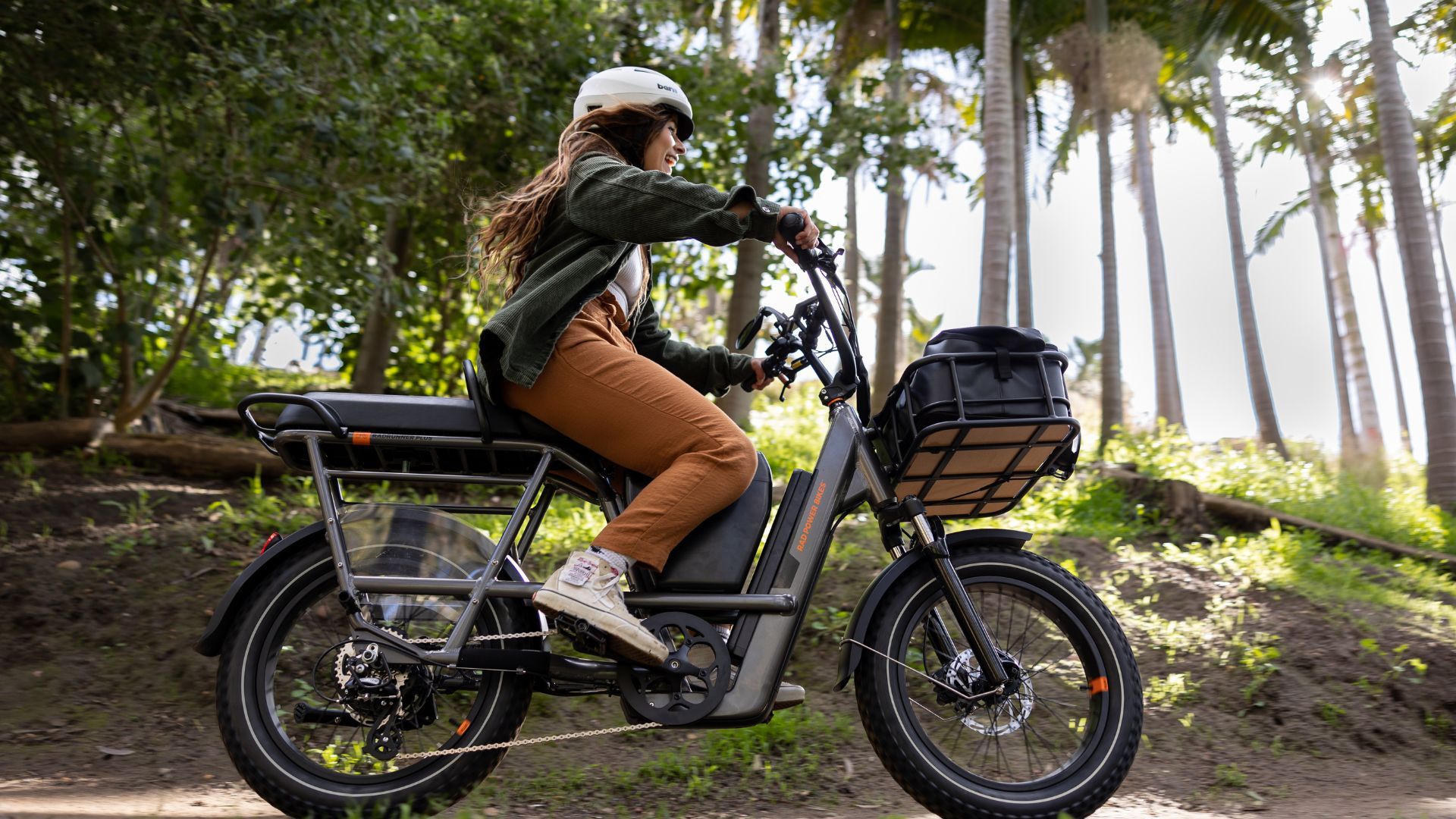
Essential Factors to Evaluate Before Buying an Electric Bicycle

Essential Factors to Evaluate Before Buying an Electric Bicycle
Ebikes are quickly growing in popularity because they’re not much more expensive than traditional bikes, and they’re super convenient and easy to use. Whether you’re looking for something to get you to and from work or school, or something to casually ride around town on the weekends, an ebike is a sound investment.
Once you’ve decided you want an ebike, it’s time to start searching for the best option for you—but that’s easier said than done. There are countless ebike manufacturers to choose from and unique terminology that can be hard to make sense of. We’ll walk you through the most important things to know when buying an ebike, and you’ll be clicking “Add to cart” in no time.
The Three Ebike Classes
When you start looking for an electric bike, you’ll often see them labeled with a “class.”t These classes are used to categorize a bike based on its max speed, power, and throttle level, if any.
Ebike classifications can vary based on your country, state, and local area, so be sure to check out your local laws before investing in an ebike. In the United States, ebikes are categorized as Class 1, 2, or 3.
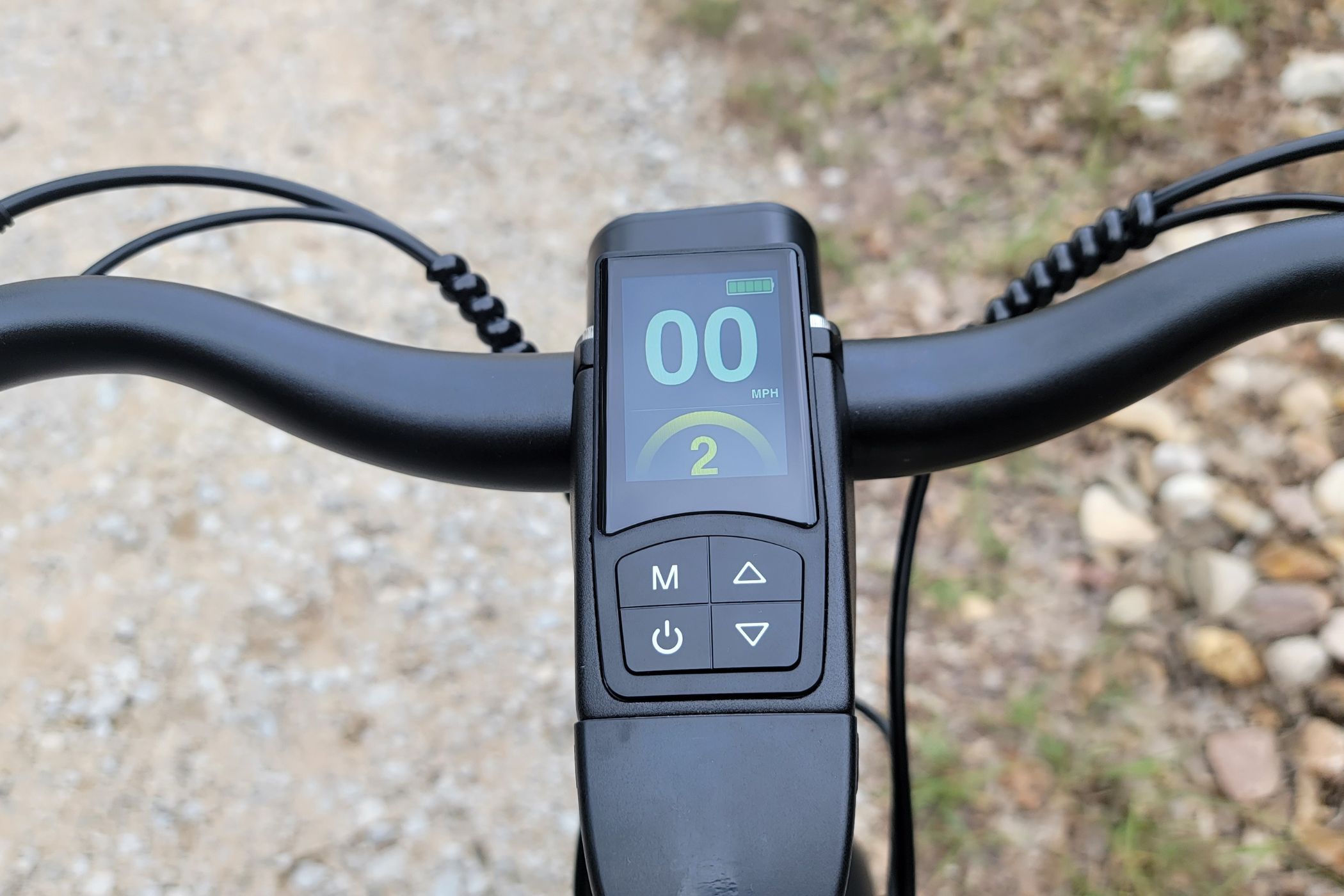
Sarah Chaney / How-To Geek
With a Class 1 ebike, the motor will only provide assistance while you’re pedaling, up to 20 mph. Class 2 ebikes can also use pedal-assist to get up to 20 mph, but they can also come with a throttle to help you reach that 20-mph max speed.
Class 3 ebikes are the fastest, with a max speed of up to 28 mph with pedal-assist. Most Class 3 ebikes have a throttle you can use to reach max speed, but many states and local laws won’t mention a throttle in the Class 3 definition, which can make things confusing.
Sometimes, you’ll come across an ebike that says it’s a Class 2 and Class 3 ebike. This can happen when a bike ships as a Class 2 ebike, but will allow riders to unlock a Class 3 top-speed of 28 mph if they’re in a state that allows them to do so legally.
If you need a more in depth explainer on what the different electric bike classes mean , we’ve got you covered.
Mid-Drive Motor vs Rear-Hub Motor
An electric bike will either have a mid-drive motor or a hub-drive motor. Mid-drive motors are positioned between the pedals in the middle of a bike, whereas hub-drive motors are situated in the middle of one of the bike’s wheels, typically the rear wheel.
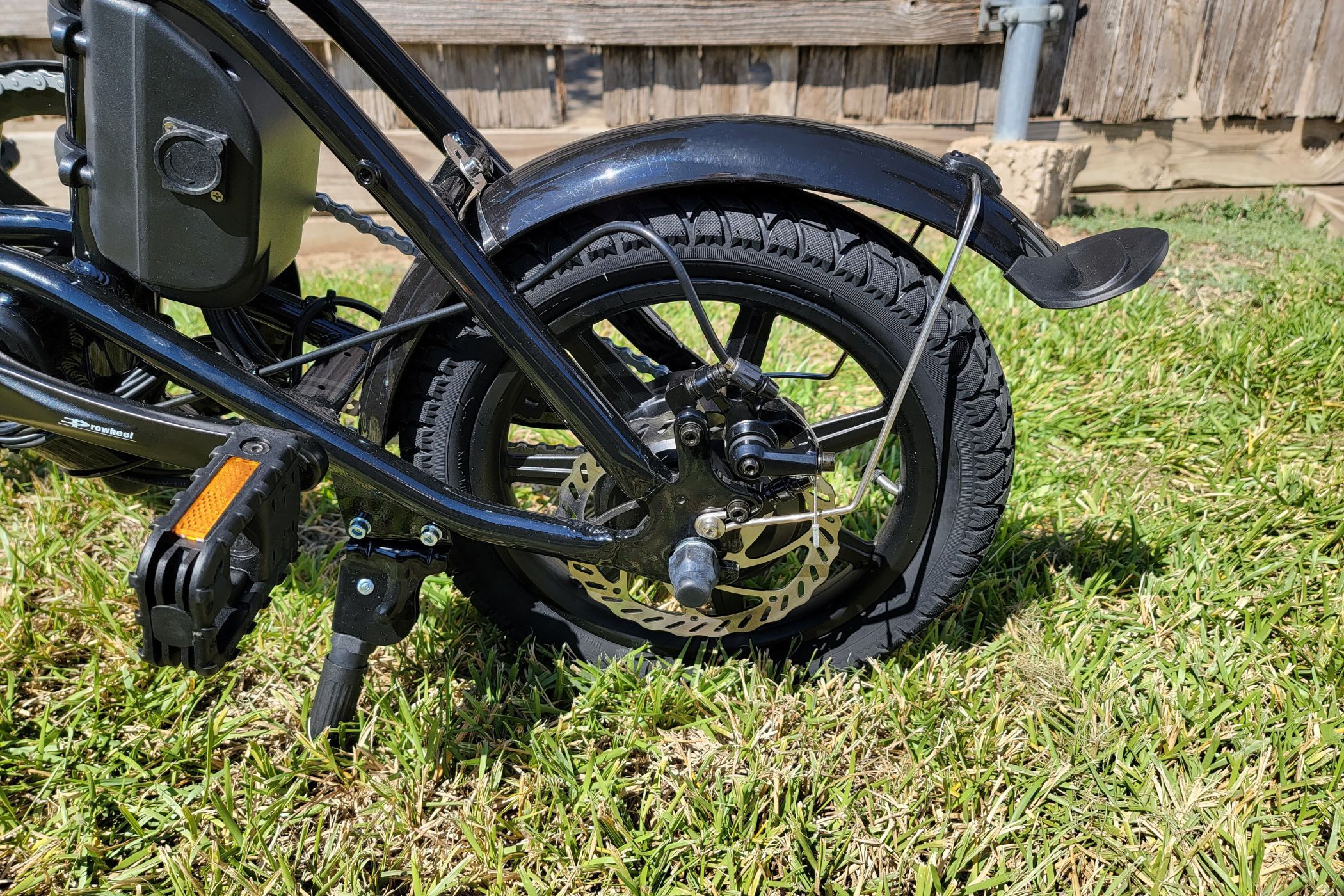
Sarah Chaney / How-To Geek
Because a mid-drive motor has a central position, the bike’s weight is more evenly distributed and the ride feels more balanced. A mid-drive motor is more powerful than a hub-drive motor, but it’s also more expensive because the frame has to be specially built around them.
Hub-drive motors are less complicated to fit into a bike’s design, which makes them an easier, cheaper choice for manufacturers. However, hub-drive motors aren’t as efficient as mid-drive motors, and they’re much heavier. Adding extra weight to one end of the bike can make turns while riding feel less natural.
Ebike motors come in various sizes, usually somewhere between 250 to 750 watts. A 750-watt motor compared to a 250-watt motor will be more powerful, more expensive, and (generally) less battery-efficient. The average commuter ebike has either a 250-watt or 350-watt motor paired with a 500Wh battery, both of which offer a good balance of power and range at an affordable price.
Cadence Sensor vs Torque Sensor
All ebikes come with pedal-assist to help make pedaling easier, but this pedal-assist experience feels different based on whether an ebike is using a cadence sensor or a torque sensor with the motor.
Ebikes using torque sensors will feel more like a traditional bike because assistance from the motor is determined by how much pressure you’re applying to the pedals. The harder you pedal, the more pedal-assist you’ll receive.
Torque sensors are generally preferred by most people because they provide a smoother ride with longer range, but they’re more expensive. Cadence sensors are more affordable, but they can cause a ride to feel jerky or even just strange to someone who’s used to a traditional bike feel.
With a cadence sensor, the motor assists a set amount for each pedal-assist level, no matter how fast you’re pedaling. When you reach an ebike’s max speed and you’re only pedaling a tiny amount, the ride can feel a bit jarring or counterintuitive.
If you want to feel more resistance while riding and get more range out of your ebike, opt for a torque sensor. If you want an easier ride that requires less physical effort, a cadence sensor will be more up your alley.
It’s also worth noting that an ebike with a throttle kind of negates the torque sensor vs cadence sensor debate—that is, if you plan to primarily use the throttle over the pedals. Using only the throttle and never the pedals will result in less total range, but you’ll never experience the resistance from a torque sensor or the jerky nature of a cadence sensor.
Gearing System: Do You Want a Traditional Bike Feel?
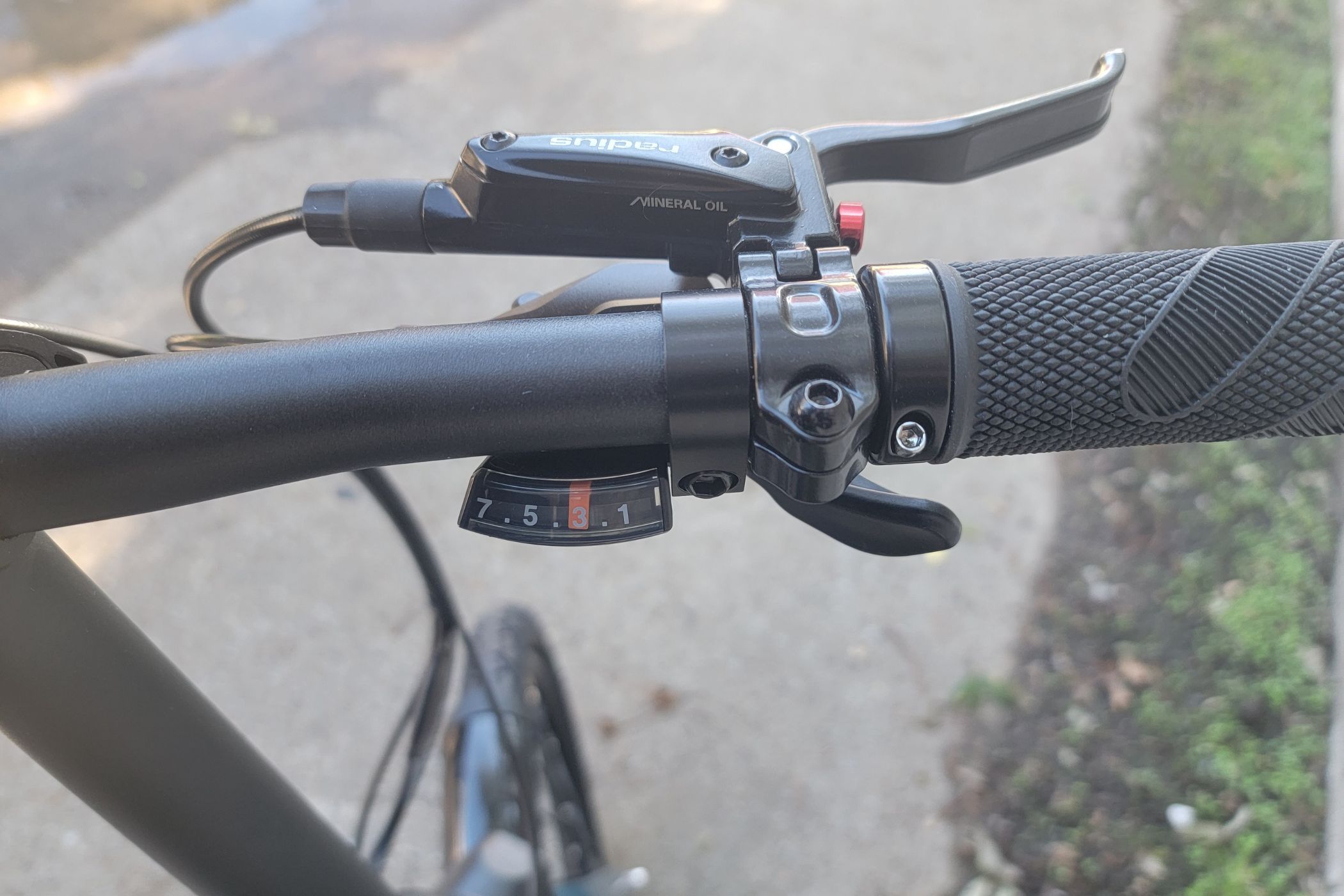
Sarah Chaney / How-To Geek
Not all ebikes are equipped with a gearing system that allows you to switch between gears while riding to adjust the level of effort required to pedal. This feeling of resistance can make an ebike more comfortable to ride because you have more control over how fast you’re going.
If you’re heading towards a hill, you can switch to a lower gear to make pedaling uphill easier. Or, if you want to add extra resistance for a good workout or simply to regulate your speed, you can switch to a higher gear.
Some ebikes will offer three gears to switch between, while others may offer up to seven, nine, or eleven gears. Typically, an ebike with a gearing system is also equipped with a torque sensor, and vice versa, but this isn’t always the case, so double-check the specs before you buy.
Battery Range: How Far Do You Need to Go?
The battery range on an electric bike can range between 20 and 100 miles, and the estimated range you’ll see from manufacturers is just that: an estimate. Your actual mileage will vary based on your weight, riding conditions, which pedal-assist level you’re using, and whether your bike has a throttle.
That’s not to say you shouldn’t take a manufacturer’s estimate into account, but you should also look up reviews for the ebike you’re interested in for some real-world examples of how the battery fared. Some manufacturers will list the testing conditions for the battery in the fine print of the specs page, so you can take that and adjust it for a more personal estimate.
How far you’ll go depends on all of the conditions mentioned above as well as the battery capacity and the power of the motor. For example, many Class 1 ebikes will pair a 500Wh battery with a 250-watt motor, while a Class 3 ebike may pair the same battery with a 500-watt motor. The Class 3 ebike will have a much shorter battery life because it’s using more power to reach higher speeds.
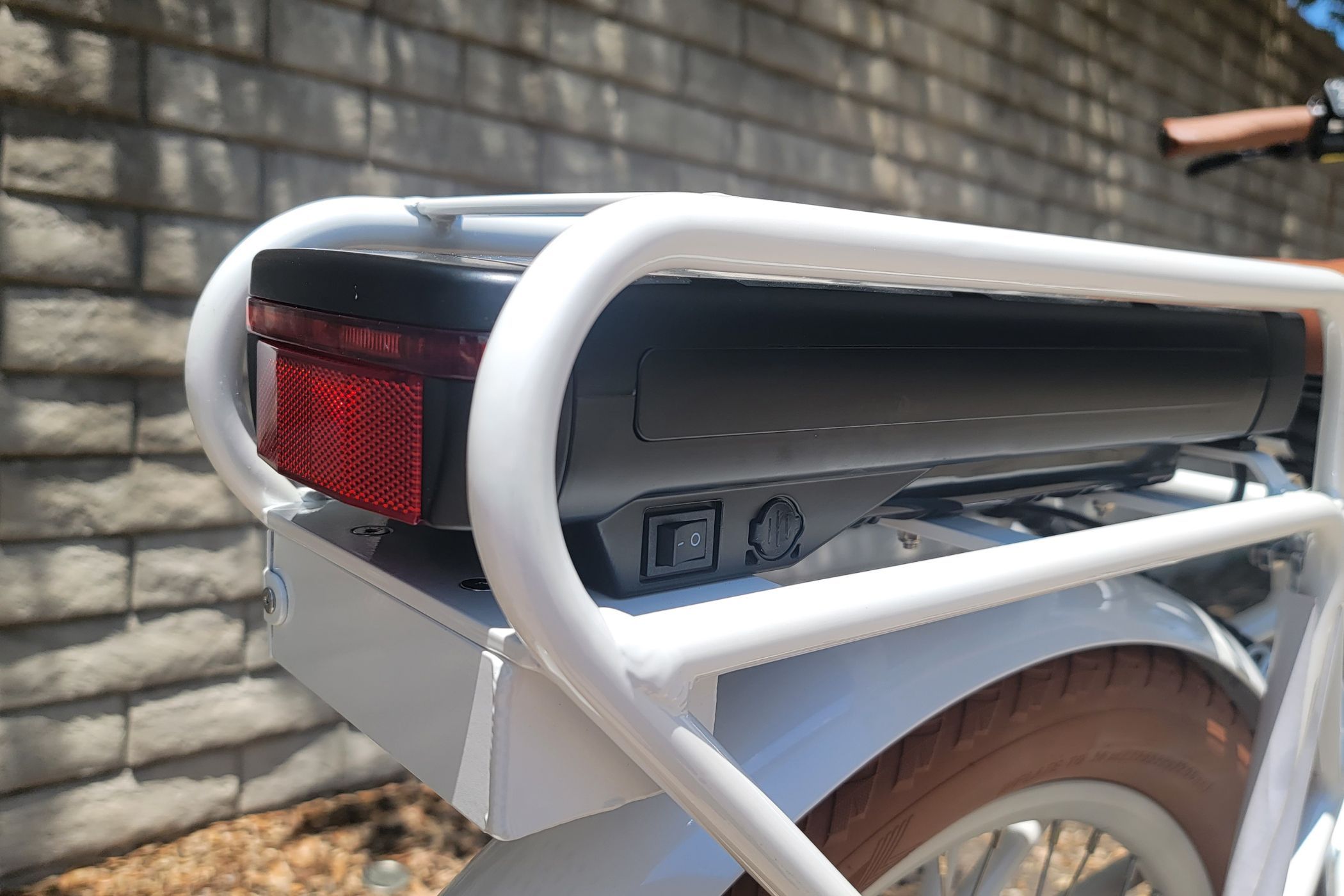
Sarah Chaney / How-To Geek
Think about where you plan to take your ebike (work, school, errands, etc.) and figure out how many miles it’ll take you to get there. Most Class 1 ebikes—which often end up being people’s first ebike—average a range of 40 to 50 miles.
Chances are, you’re not planning to ride 20 to 25 miles to your destination and deplete the battery in a single ride. Selecting a good estimated battery range is more about how often you want to charge the ebike.
If you live three to five miles away from school, you could probably commute every day and only charge the bike once a week. If you want to get to school faster and don’t mind charging your ebike more often, a longer battery range won’t be as worth it as a more powerful motor on a Class 3 ebike.
Some ebikes, like the Fiido E-Gravel , offer riders the choice of buying an extra battery to extend their overall range. However, the larger your overall battery capacity is, the heavier your ebike will be.
Step-Through Frames vs Step-Over Frames
Just like traditional bikes, ebikes come with two main frame styles: step-over or step-through. A step-over bike typically has a higher bar in the center of the frame that requires you to step over the bike to get on. A step-through bike lacks this upper bar, allowing you to step through the bike rather than swing your leg over.
Step-over frames are generally sturdier, making it easier to ride faster or over rougher terrain. However, step-over frames can be difficult to use for those with mobility issues or shorter heights. Many step-over frames are suitable for rider heights of five-foot-eight and above, whereas step-through frames are often suitable for rider heights of five-foot-zero.
Step-through frames are more comfortable to get on and off for most people, but especially for people who are shorter or don’t have full range of motion. You don’t have to lift your leg nearly as high to get on a step-through frame, which is great if you’re wearing skirts or dresses, or if you need to get off the bike multiple times a day.
Accessories and Built-ins Are a Bonus
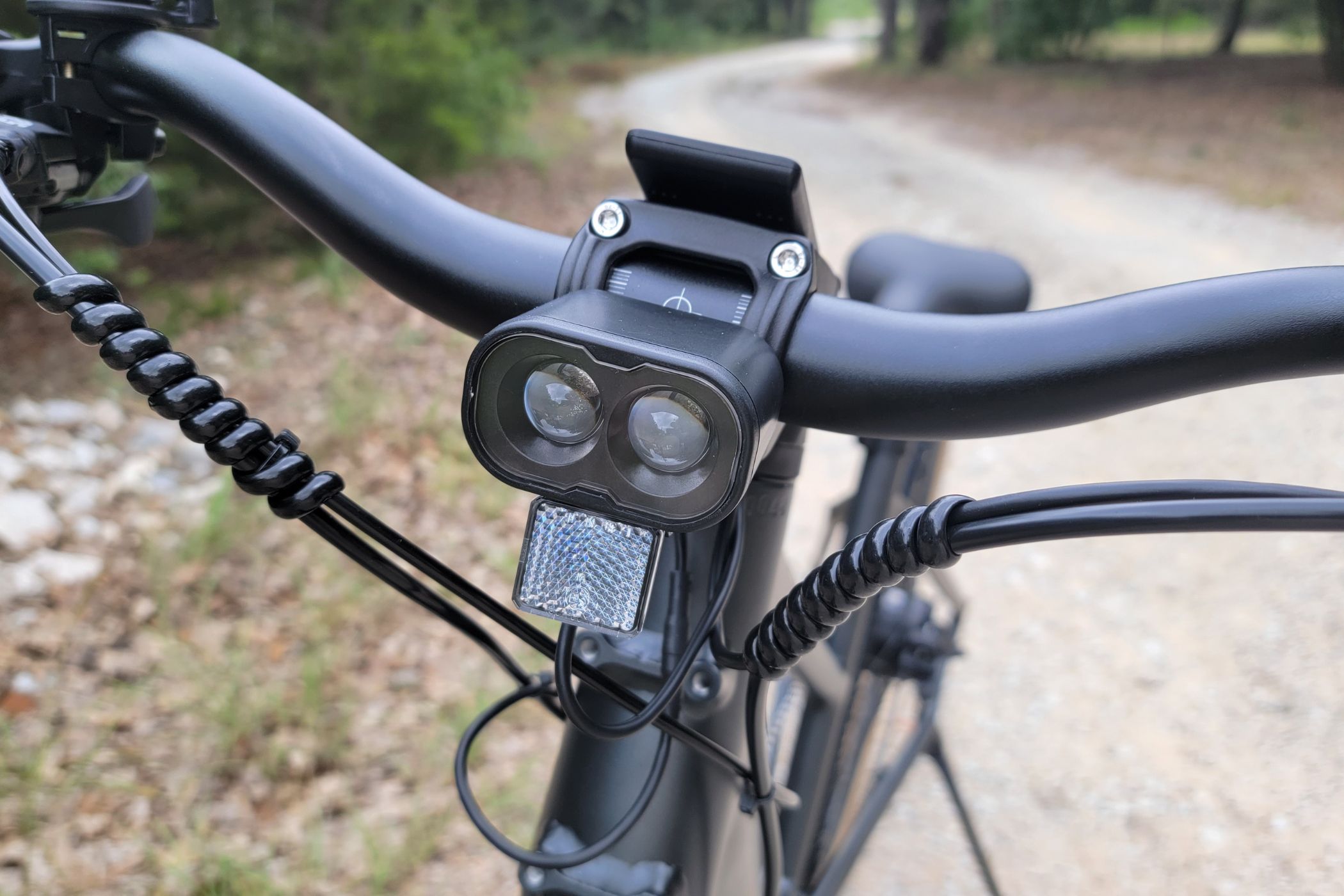
Sarah Chaney / How-To Geek
Many ebike manufacturers will offer free accessories with an ebike purchase as a promotional tactic. Free accessories could include front or rear lights, fenders, cargo racks, baskets, or a water bottle holder. While these bonus accessories are great, they shouldn’t be the reason you choose an ebike because they’re usually inexpensive, and you can add them to any ebike afterward.
The same thought can be extended to built-in features, like a cargo rack or water bottle holder built into the frame. If you’re specifically looking for an ebike with a cargo rack that’s sturdier and built directly into the frame, or an ebike with an integrated front light, that’s a different story. This advice serves more as a warning to not choose one ebike over another only because of its bonus accessories or built-ins.
Which Type of Electric Bike Should You Get?
There’s a lot of jargon in the ebike world, so it can understandably feel intimidating to start your search for the perfect ebike. If you know you want to try out an ebike, but you don’t want to get hung up on the tiny details, try searching for an ebike based on its type.
Before you make the leap, you can check with a local shop to see if an ebike in stock for you to test ride. Not all ebikes will be available to try locally, but it’s becoming more likely as ebikes grow in popularity.
Commuter Ebike
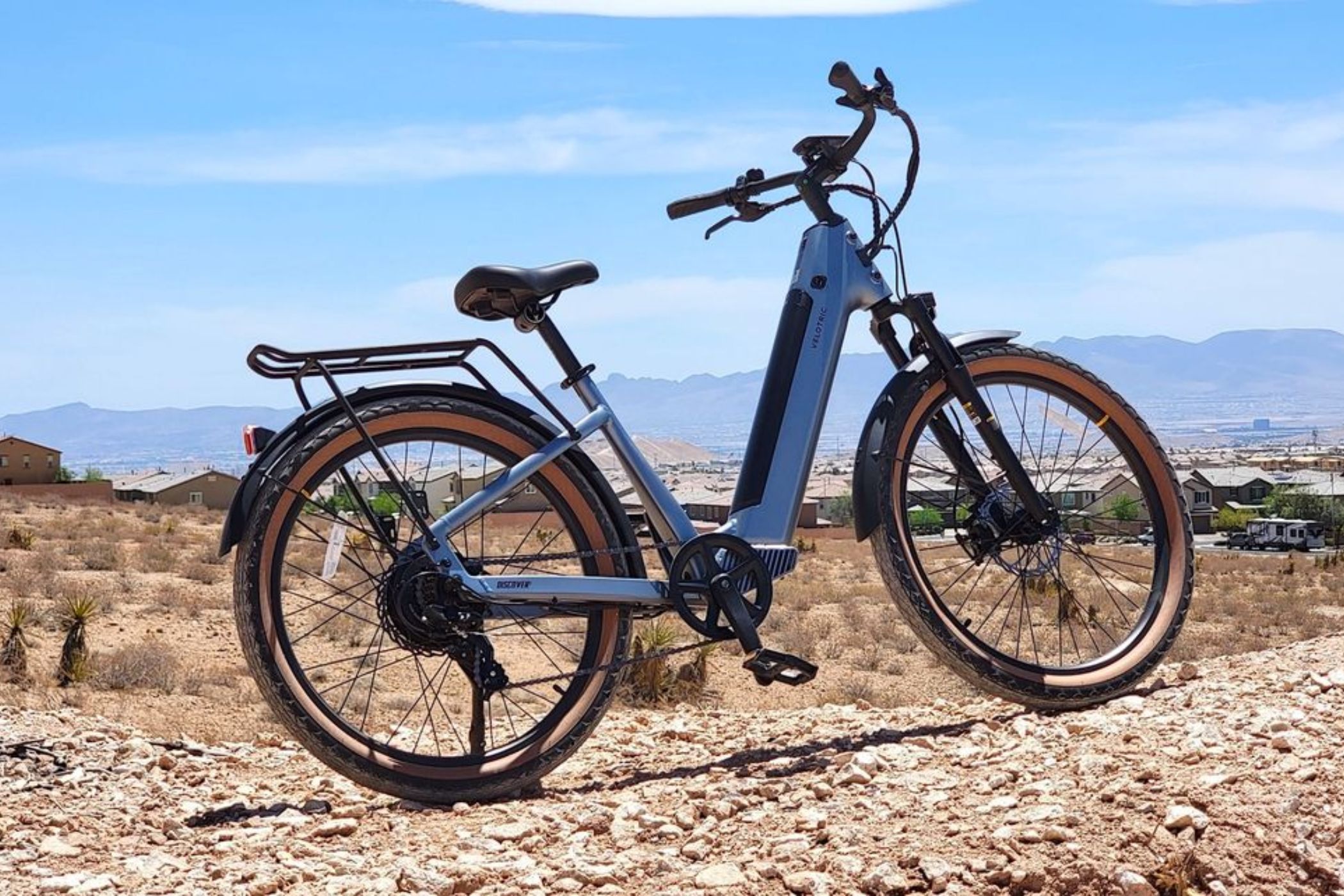
Cory Gunther / How-To Geek
Commuters are the most common ebike type, designed with efficient and comfortable riding in mind for those commuting from home to work or school. Commuter ebikes, like Velotric’s Discover 1 , are often equipped with thinner tires, comfortable seats, and accessories that help you stay safe on the road, like fenders or lights.
You’ll often see the terms “commuter ebike” and “city ebike” used interchangeably, but they generally sport the same design and features. Although commuter ebikes come in Class 1, 2, and 3 variants, most people will go for a Class 3 commuter to maximize speed and reach their destination faster.
Cruiser Ebike
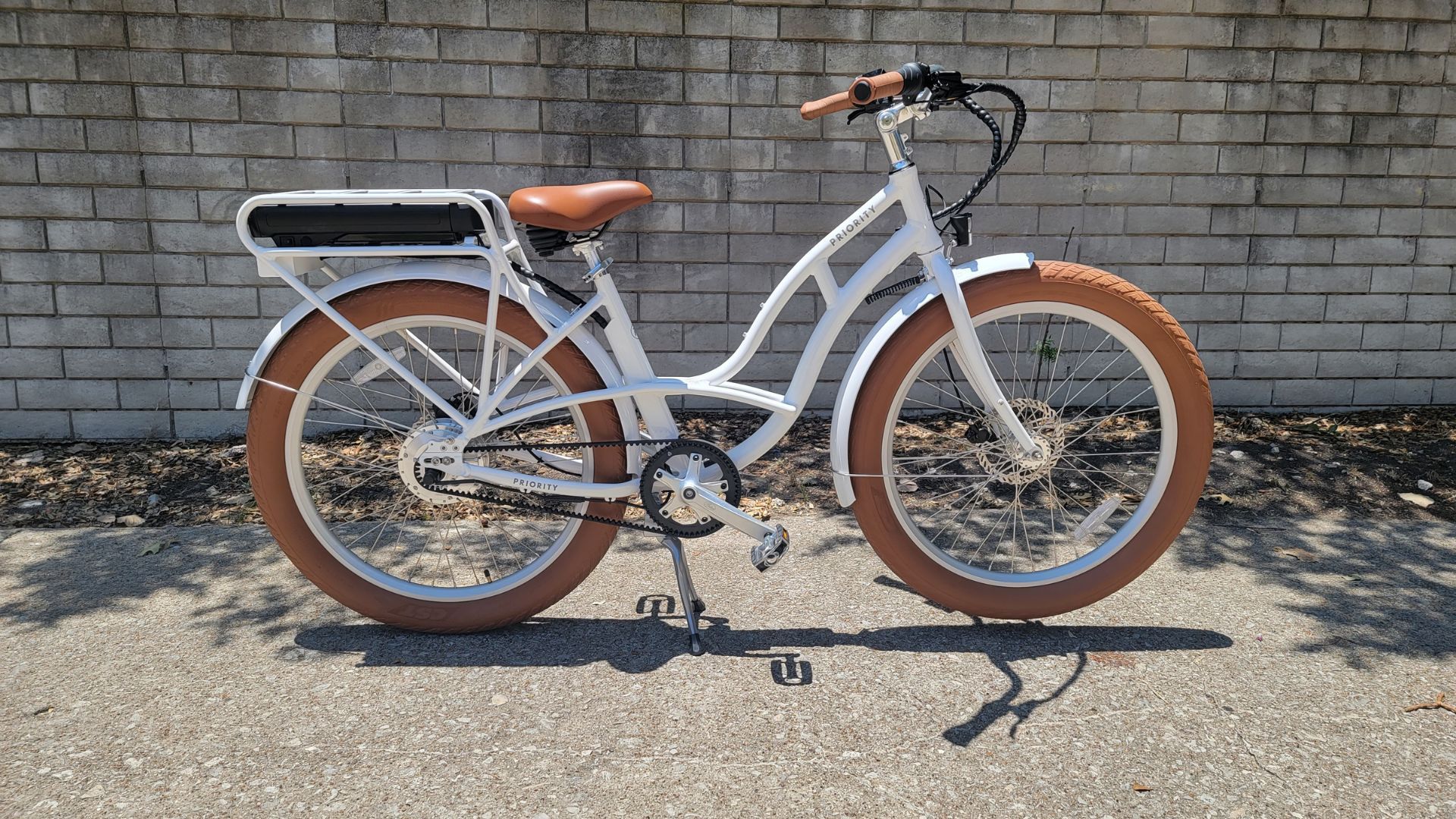
Sarah Chaney / How-To Geek
If you’re after a super comfortable, recreational ride, look no further than cruisers. A cruiser ebike, like the eCoast , has a wider, cushier seat than you’ll find on a commuter ebike, as well as a suspension system and fatter tires for a smoother ride. Many cruisers are designated as Class 2 or 3, which means they come with a throttle and don’t require any pedaling from you if you’re just trying to enjoy a relaxing day outside.
Cargo Ebike
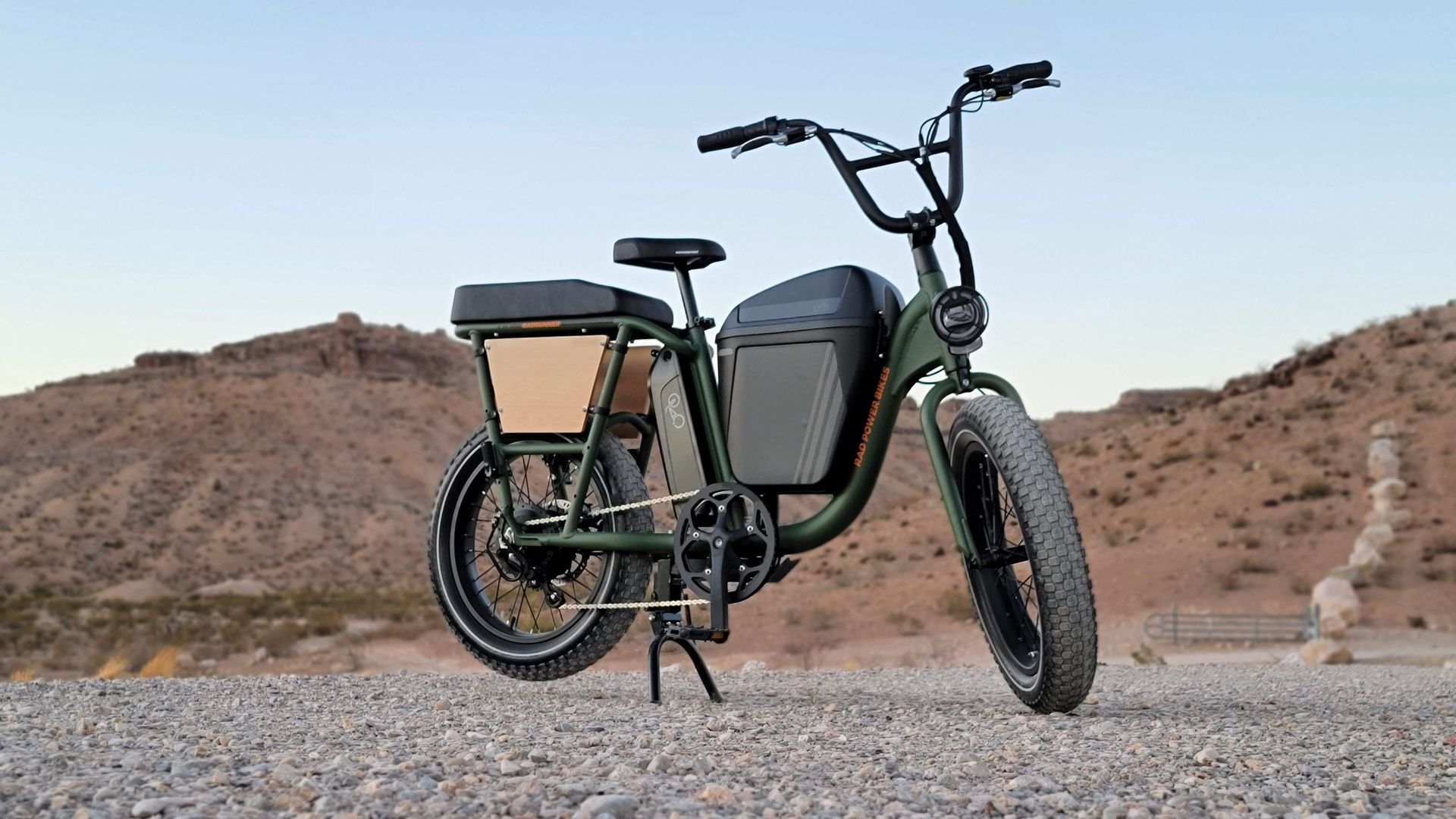
Cory Gunther / How-To Geek
A cargo ebike, as the name implies, is handy for hauling a lot of stuff around. These ebikes are generally heavier and larger than other ebikes before adding your own cargo. A cargo ebike, like the RadWagon 4 , is defined by its fat tires, built-in racks or extra seats (or both), and thicker frame. Although commuter ebikes might be more common, many people prefer cargo ebikes for their commute to work because it offers so much storage space.
Folding Ebike
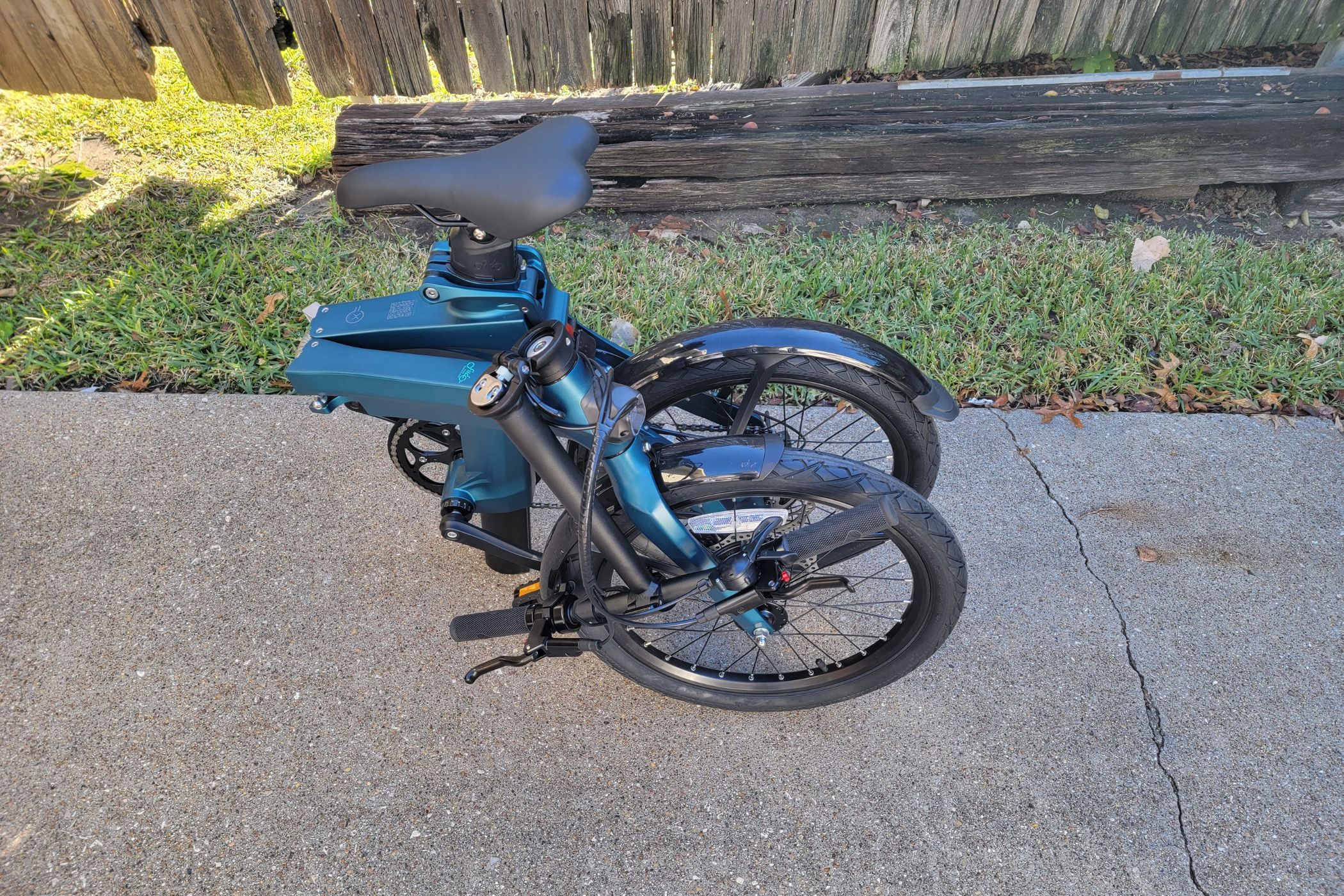
Sarah Chaney / How-To Geek
If you’re short on space in your home or you commute via train, bus, or other public transportation, look into a folding ebike, like the Fiido X . Folding ebikes can also be categorized as commuter ebikes, but they can fold compactly enough to fit in an average car trunk.
Most folding ebikes fold in half, and you can easily roll it around while it’s folded up. These neat ebikes are more niche than commuters, cruisers, or cargo ebikes, but they’re becoming increasingly popular because of their space-saving form factor.
Mountain Ebike
A mountain ebike, also referred to as EMBs or eMTBs, takes elements from both cargo and cruiser ebikes and bumps it up a notch. EMBs have thick, strong frames, fat tires, and an excellent suspension system. This build makes it easy to tackle trails with large rocks, gravel, or uphill terrain.
There are plenty of electric mountain bikes to choose from, but you certainly won’t find as many eMTBs as you would commuter ebikes. More people are looking to use an electric bike on roads or simple trails than rocky, mountainous terrain.
Try to Test Ride an Ebike
After learning what you should look for in an electric bike, see if there’s a local bike shop in your area with ebikes that you can test ride. Even if you don’t end up buying the specific ebike you test ride, it’ll give you a sense of how different components feel and help you decide which ebike you should buy.
Also read:
- [Updated] Fine-Tuning Your Fly Top Tips for Choosing Drone Propellers
- [Updated] Simplified Steps Capturing Breathtaking Time-Lapses on Black Hero5
- Discover These 6 No-Cost Alternates to OpenAI’s Sora Technology Today
- Full Guide to Hard Reset Your Xiaomi Redmi Note 12 Pro+ 5G | Dr.fone
- How do I reset my Honor V Purse Phone without technical knowledge? | Dr.fone
- How to Prepare For and Execute an Effective FB Account Shutdown
- How To Repair Apple iPhone 11 Pro iOS System Issues? | Dr.fone
- How to Transfer Contacts from Honor X50 to Other Android Devices Using Bluetooth? | Dr.fone
- How To Transfer Data From Apple iPhone 11 Pro To Other iPhone 13 Pro Max devices? | Dr.fone
- How To Transfer WhatsApp From Apple iPhone 11 to Android? | Dr.fone
- In 2024, BeyondBasics The FuturePost-MyCam Cameras
- Is your Vivo S17 Pro working too slow? Heres how you can hard reset it | Dr.fone
- Reset pattern lock Tutorial for Itel A60
- Resolved! Exploring the Causes of Your Windows 10 Machine's Unexpected Boot Cycles
- Solved Photos Disappeared from iPhone 14 Plus Suddenly | Stellar
- Speech-to-Text Magic Free Edition
- Troubleshooting Tips: Fixing the Infamous hal.dll Error on Windows 11, 10, 8, and Vista
- Updating Your AMD Graphics Card Software for Enhanced Compatibility with Windows 11/7/XP
- Use Device Manager to identify missing your drivers with Windows Device Manager on Windows 10
- Title: Essential Factors to Evaluate Before Buying an Electric Bicycle
- Author: Ian
- Created at : 2025-02-19 00:24:24
- Updated at : 2025-02-20 00:04:09
- Link: https://techidaily.com/essential-factors-to-evaluate-before-buying-an-electric-bicycle/
- License: This work is licensed under CC BY-NC-SA 4.0.